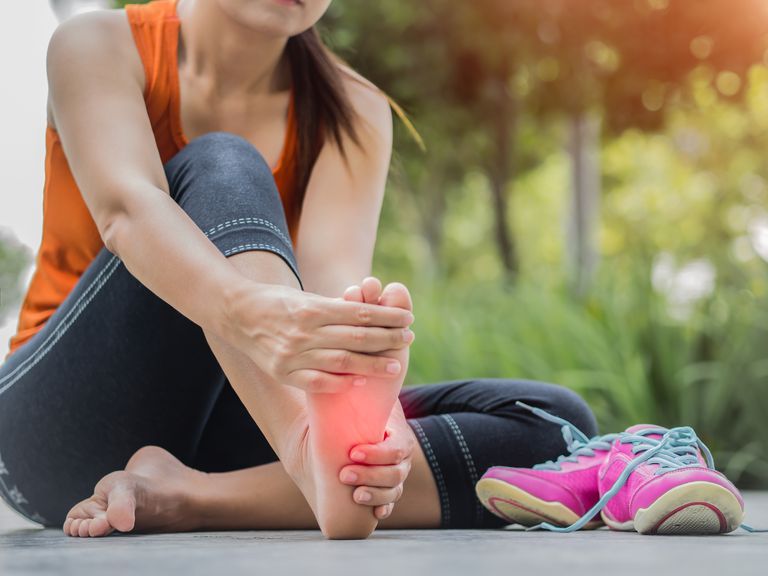It would be wrong to think every mile would be pain free 100% of the time. Niggles, tightness, DOMS and fatigue come to the surface at some point in your running journey. The trick is to keep them at bay, listen to your body and take the appropriate action when required. Reduce the mileage, intensity, terrain or frequency of runs when there is sign of an issue. It’s better to take a little time off now as opposed to a lot of time off later. For most people a varied training program which incorporates any form of weekly strength and conditioning, stretching and regular foam rolling will run happily into the horizon. However, injuries can occur for the following reasons;
- Poor running style/technique
- Lack of flexibility
- Overtraining
- Level of physical development
- Undetected physical imbalances
- Not enough rest between efforts, sessions or even a week’s training
- Returning to training too soon
- Poor footwear
- Inappropriate training programme
Unless addressed the above can then develop onto the most common runners’ injuries. It’s not all doom and gloom but always best to be aware of the potential risks.

Runners Knee
This is the irritation of the cartilage on the underside of the patella (kneecap). About 40 percent of running injuries are knee injuries (runnersworld.com). It typically flares up during or after long runs, after extended periods of sitting, or while descending hills and stairs. Risk factors include overpronation (excessive inward foot rolling) and weak quads, hips, or glutes.
Achilles Tendonitis
The Achilles tendon connects the two major calf muscles to the back of the heel. Under too much stress, the tendon tightens and becomes irritated (tendinitis). It makes up 11 percent of all running injuries. Runners who dramatically increase training (especially hills and speedwork) and have tight, weak calves are vulnerable. If you keep running as usual, you could develop a serious case that may take six months to go away.
Hamstring Issues (the bane of my life!)
The muscles that run down the back of our thighs bend our knees, extend our legs, drive us up hills, and power finish-line kicks. When our hamstrings are too tight or weak to perform well, we notice it. Hamstring issues usually arise because these muscles are weak—often from being too long or too short. Counterintuitive as it might seem, very flexible people are prone to hamstring problems because their overly stretched-out muscles are more vulnerable to damage. On the flip side, people who can barely touch their toes or who sit for long periods of time are also at risk. Tight, short muscles are under greater tension. Another factor is muscle imbalance: Many runners’ quadriceps overpower their hamstrings, which sets them up for injury.
Plantar Fasciitis
With each step, our feet absorb a force several times our body weight which can cause plantar fasciitis. Small tears or inflammation of the tendons and ligaments that run from your heel to your toes, it’s usually the top foot complaint among runners. The pain, which typically feels like a dull ache or bruise along your arch or on the bottom of your heel, is usually worse first thing in the morning. Runners with very high or very low arches are vulnerable. Other causes are extreme pronation (foot rolls inward excessively) or supination (foot rolls outward excessively) and increasing your mileage too quickly. Long periods of standing, especially on hard floors without supportive footwear, may exacerbate the problem. Tight hip flexors, weak core muscles, and a history of lower back pain can also contribute. Back issues and core weakness can lead to subtle changes in your stride that you’ll feel in the feet.
Shin Splints
Refers to medial tibial stress syndrome, an achy pain that results when small tears occur in the muscles around your tibia (shin bone). Common among new runners and those returning after an extended layoff. They’re a sign that you’ve done too much, too quickly, or wearing the wrong shoe or a pair with too many miles, and those with high arches or flat feet.
Iliotibial Band Syndrome (ITBS)
The iliotibial (IT) band lies along the outside of the thigh from the hip to the knee. When you run, your knee flexes and extends, which causes the IT band to rub on the side of the femur. This can cause irritation if you take up your mileage too quickly, especially if you’re doing a lot of track work or downhill running. Runners who develop ITBS may overpronate, have a leg-length discrepancy, or suffer from weak hip abductor and gluteal muscles.
Stress Fracture
Stress fractures develop as a result of cumulative strain on the bone. Runners most often have stress fractures in their tibias (shin), metatarsals (feet), or calcaneus (heels). They are one of the most serious of all running injuries and runners who overtrain are most at risk. Bones need downtime to rebuild after a workout. If you increase the duration, intensity, or frequency of your running too soon, your bones can’t repair themselves fast enough to keep up. Stress fractures are more common in women than men, usually due to nutritional deficits, low estrogen levels, and inadequate calorie intake.
A wise man once said ‘you will give yourself a greater injury if you ignore the warnings and carry on as normal’. My advise to you….BE WISE!
Clare x